The Olive tree grows in different soil types, even with low fertility. The Olive tree grows better in neutral or slightly alkaline soil. A balanced fertilization program should substitute nutrients lost due to the production of Olive fruits. Olive trees don’t need high fertilizer levels to grow well; too much fertilizer can damage crop production and oil quality. Olives grow best if fed in the growing season. Let’s check out the best fertilizer for Olive trees.
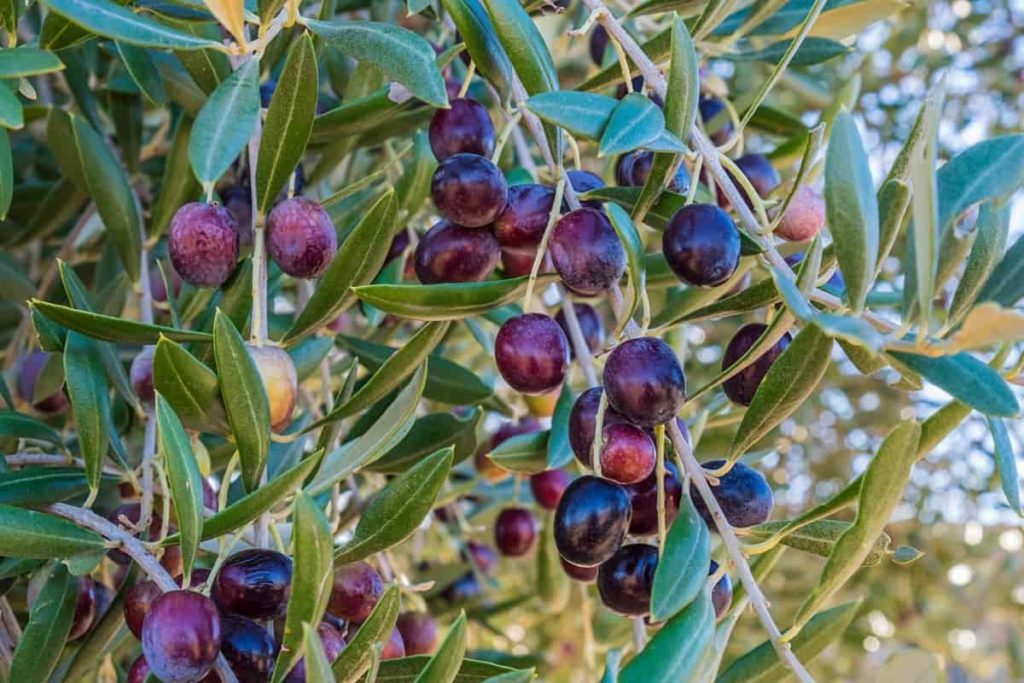
Olive trees benefit from organic and chemical fertilizers. Chemical fertilizers quickly address the ever-increasing needs or nutritional deficiencies very quickly. Controlled release fertilizer gives adequate fertilizers to Olive trees for several months. Liquid fertilizer gives immediate results but must be repeated regularly during the growing season; follow the manufacturer’s instructions. Nitrogen is essential for Olive tree growth rate and health. The extra nitrogen in the Olive tree favors the appearance of a black scale.
Phosphorus is a component of the main tree enzymes and proteins as it is directly or indirectly involved in the metabolic process. Olive trees have higher annual potassium requirements, especially during fruit growth and maturity, when more than 60% of the potassium is transferred to the fruit. Potassium is also required in large quantities, as it is an essential factor for fruit size and weight, amount of fruit oil, and standard oil properties.
Boron is an essential trace element for Olive trees and is the most crucial factor for flower formation and pollination. Boron deficiency is the most nutrient deficiency of Olive trees and directly affects the fertility of the Olive grove. Zinc activates multiple enzymes and is essential for the biological synthesis of auxin to improve flowers and pollination. Calcium is a necessary factor for the development and functioning of roots, is a component of cell walls.
In case you miss this: Olive Oil Extraction Methods, Process, Steps
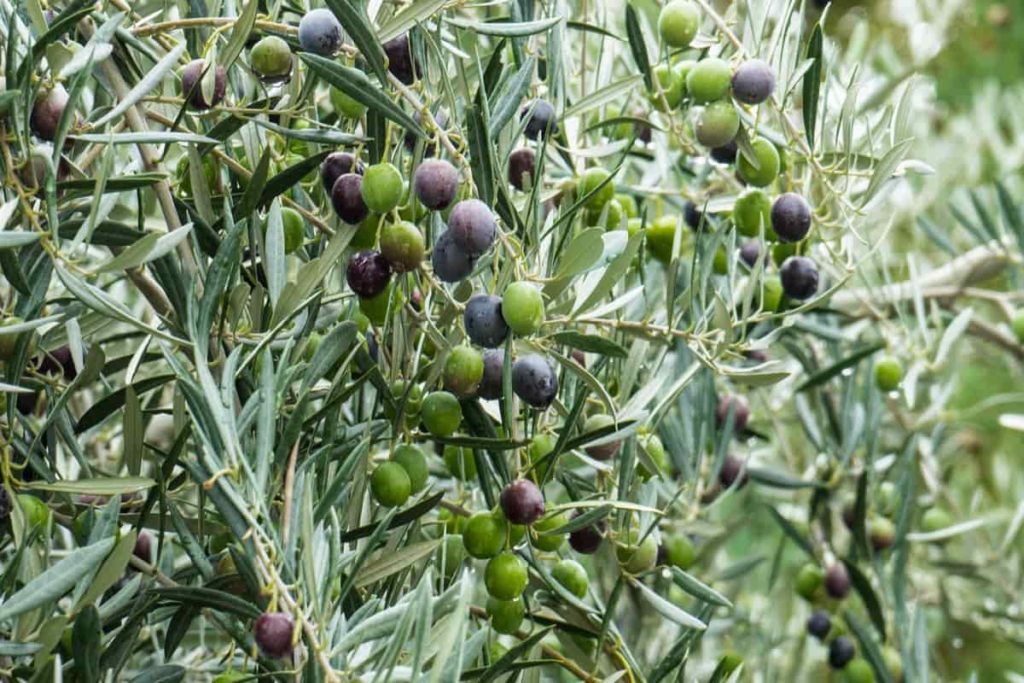
Best fertilizer for Olive trees
Homemade fertilizers for Olive trees
Coffee ground
Coffee grounds are good for potted Olive trees. So, apply Coffee grounds, mulch, or pine needles to your Olive tree pot to help make the soil acid with low pH levels. Always check your soil, so you’re not adding too much acid.
Epsom salt and guano, or seaweed and Epsom salt, will strengthen your Olive tree throughout the year. More in potassium, phosphorus, and magnesium, it enriches the soil and encourages the growth of trees.
Organic and liquid fertilizers for Olive trees
Choose nitrogen-rich organic fertilizer that will gently feed Olive trees over time. Find fertilizer products containing feather or blood meal, or use good quality compost instead. It is better to feed lightly and often during the growing season. It is wise to feed your tree with blood and bone meal in early spring, and every other year a good mulch with well rotten manure will keep the Olive tree happy. You can use liquid seaweed extract fortnightly will help keep your Olive tree healthy.
Compost manure for Olive trees
Olive trees produce better production in soil rich in the ratio of manure and balanced NPK. Aged animal manures decompose over time, which helps nourish trees and soil. Apply manure during autumn (well-rotten chicken manure is good) and rock phosphate (powdered rock minerals). Fertilizers like compost and aged animal manures feed Olive trees with fertilizer sources that dissolve in an extended time and help modify soil.
In case you miss this: Organic Olive Farming – Production Business Plan
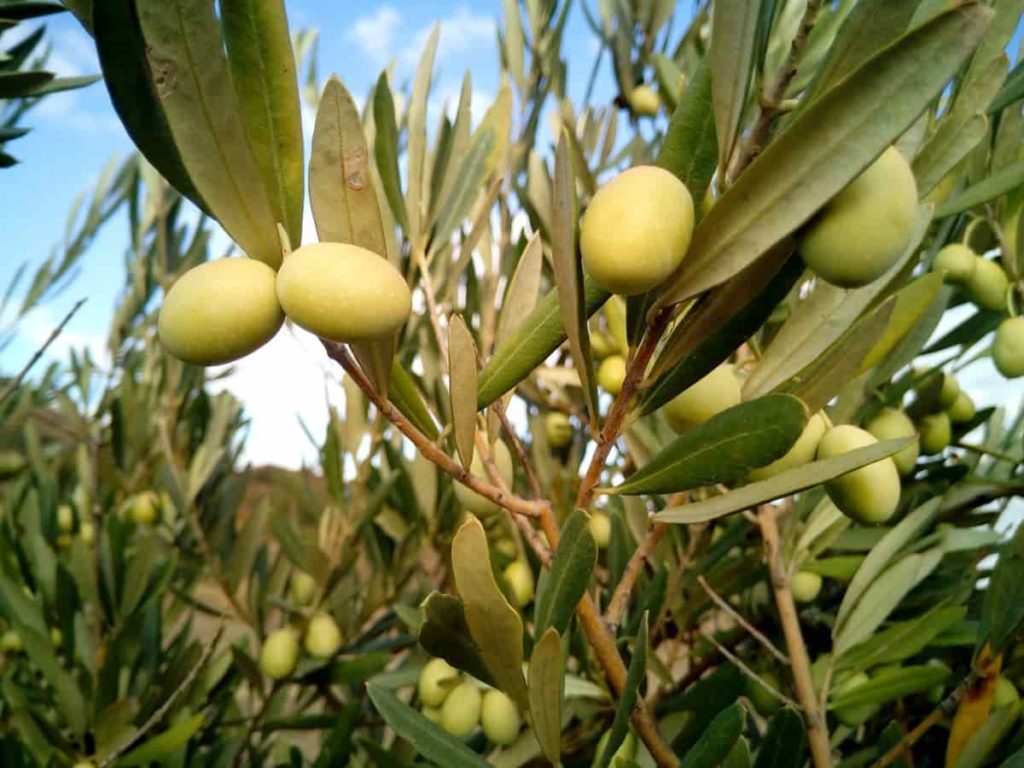
Natural fertilizers for Olive trees
Do not use wooden chips, cypress mulch, etc., for mulch. These products are high in carbon, and the soil of nitrogen and other nutrients is looted in decomposition. You can prefer to use only pine straw for mulch and keep it several inches behind the trunk. If pine straw is not obtainable, you can mix it with pine bark.
Commercial fertilizers for Olive trees
NPK ratio
When an Olive tree is planted in the ground, or an Olive tree is planted in the pot, the fertilizer of the Olive tree with the fertilizer ratio of NPK 16-16-16 is highly recommended as Olive trees are both challenging and 100% heavy feeders. A balanced liquid fertilizer that dilutes to half the strength should be applied in spring and summer every other week. A balanced liquid fertilizer that dilutes the power should be applied in spring and summer every other week. Alternatively, apply slow-release fertilizer twice a month starting in early spring.
In addition, foliar treatment can cause toxicity in an Olive tree when water is used with high sodium or chlorine water, both easy to assimilate by Olives. Excessive application of micronutrients like boron can cause toxic and significant damage to the Olive grove. When treatment with foliar fertilizer for Olive trees is excessively acidic, it can cause burning on Olive leaves. Nitrogen is a nutrient that can be deficient in an Olive tree.
It is essential for the formation of flowers, fruits, and leaves. For mature trees during the growing spring season, give each tree 900 grams of urea or 23 kg of compost. Feed 28 grams of urea every month for young trees and water it well. Other chemical formulations, such as ammonium nitrate, ammonium sulfate, calcium nitrate, or ammonium phosphate, have a different proportion of nitrates or ammonia for nitrogen sources and have different applicable rates.
In case you miss this: Frequently Asked Questions About Olive Farming (FAQs)
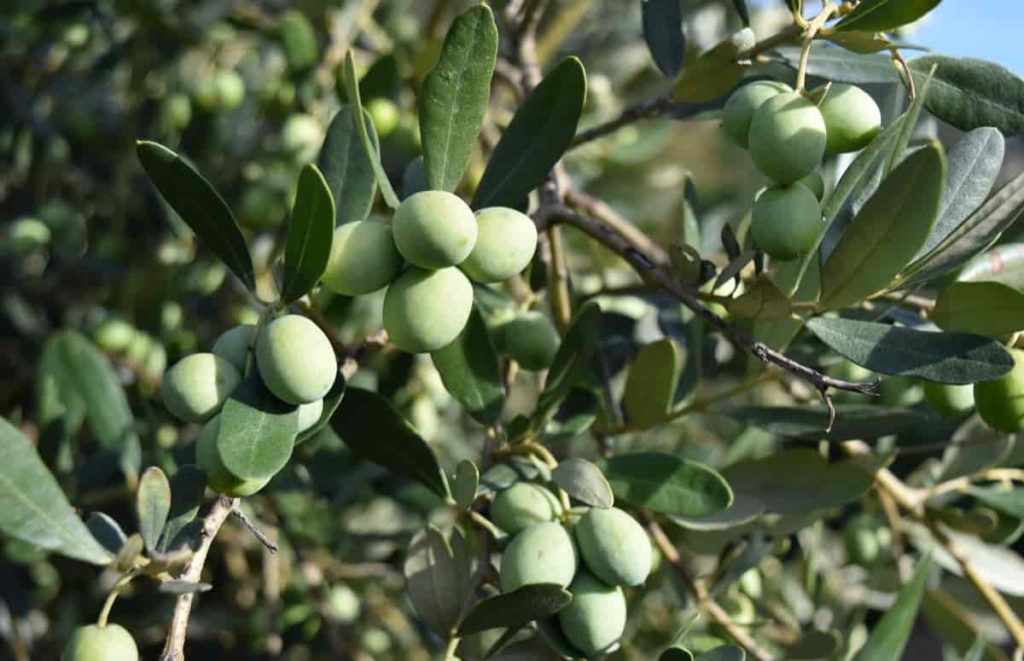
It is better to distribute the total annual amount of tree requirement in the growing season rather than applying too much at the same time. It is unlikely that Olive trees will be deficient in phosphorus or potassium. Olive trees don’t need as many elements as other types of fruit-bearing trees. The Olive tree usually gets all the potassium it needs when using organic fertilizers. Olives generally have a satisfactory secondary level, and elements such as copper, zinc, manganese, magnesium, and calcium are detected unless the soil is bad. Olive trees do not notice the deficiency of these minerals or phosphorus. There have been limited local instances of defects have occurred.
Olive trees fertilizer schedule
The best time to fertilize Olive trees is when the Olive tree has left winter rest. When the Olive tree closes in January, and you risk that winter and spring rains will take a share of fertilizer, it is deficient in paying. Fertilizing with moist soil or fertilizer shortly before it rains is an excellent way to prevent nitrogen from being humiliated when exposed to the sun. However, rains should not be very high, as water can drag fertilizer. Ideally, once we add fertilizer, the roots of the Olive tree can start using it as soon as possible.
Fertilization of Olive trees is usually done in autumn when Olive trees are deficient in potassium or phosphorus. The application must be performed as soon as soil moisture allows fertilizer to dissolve. It is essential to keep in mind that the Olive tree will enter the vegetative stop when the average temperature is below 10ºC, so that the Olive tree feed has an effect, we have to do so at the beginning of autumn. However, don’t apply nitrogen until spring because nitrogen encourages sprouting, and tender shoots can burn from winter frost.
How to fertilize Olive trees in pots
Olive trees are well suited to grow in rocky soil with less than perfect nutrition. To simulate this in the container garden, start with an average organic potting soil and then modify with extra perlite or edit with one or two small lava rocks. It spreads nutrition and increases drainage capabilities. Since potted plants always have only limited supplies of nutrients available. After potting or repotting, the new substrate initially contains enough nutrients for the first few months. Fertilization is not necessary here.
In case you miss this: Olive Farming Information Detailed Guide
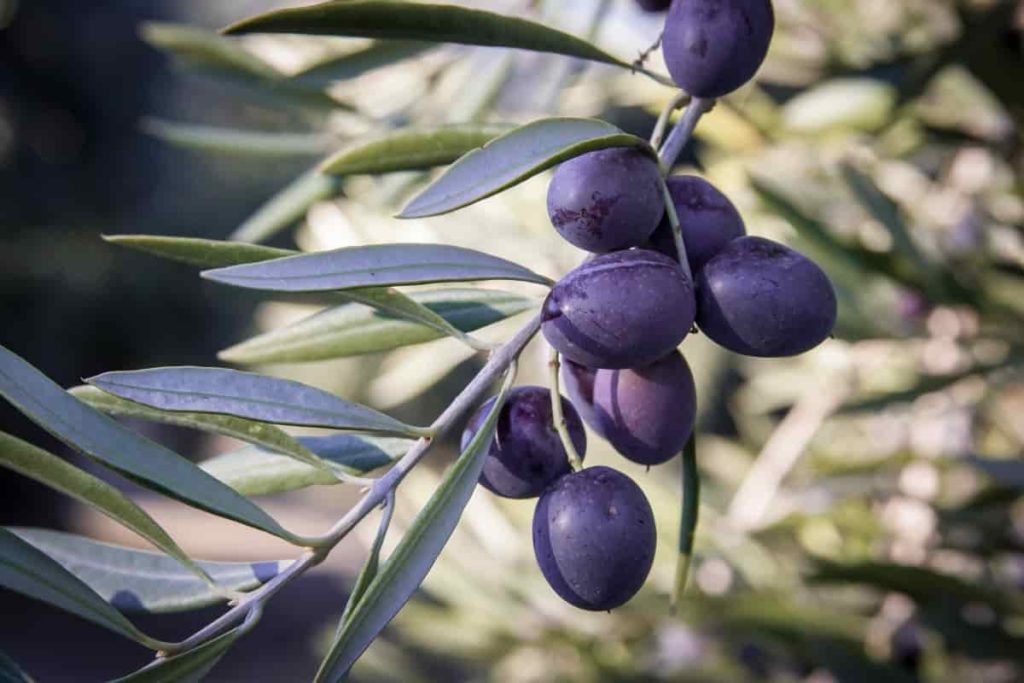
However, if the soil is leached after a few months, you should add fresh nutrients to the Olive tree through liquid fertilizers. When dosing, pay attention to the amount reported on the package, as the Olive tree should not be overfertilized. Add liquid fertilizer indicated food to irrigation water every two to three weeks. You can use a tiny dose of well-matured, sieved compost to the upper layer of the soil.
Frequently asked questions about fertilizers for Olive tree (FAQ)
Does miracle grow well for Olive trees?
Feed your Olive trees in spring with Miracle-Gro plant food.
Why are my pot Olive tree leaves turning brown?
The main reasons why Olive tree leaves are brown and fall are more water, poor drainage, overfertilization, or distress. At the same time, Olive leaves turn the color into brown if affected by Olive peacock spots, verticillium wilt, other insects, and diseases.
Is tomato feed good for Olive trees?
Feeding your Olive tree will help it thrive. You can also feed them with fast-release fertilizer like tomato feed in spring.
In case you miss this: How to Get Hydroponic Farming Subsidy: Up to 50%, and License to Start
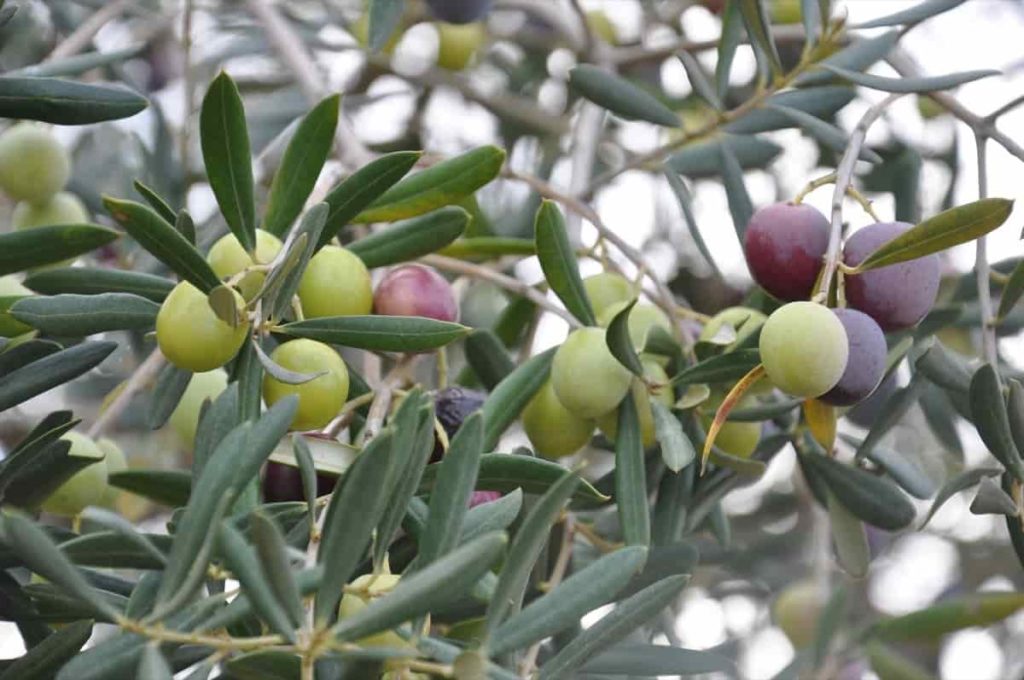
Why is my Olive tree not producing Olives?
The main reasons your Olive tree is not producing Olive fruits are the age of the Olive tree, lack of sun, inadequate irrigation, lack of nutrients, too much acid soil, or lack of pollination.
Why are the Olive leaves turning yellow?
Yellowing the leaves of an Olive tree can mean that the tree is either not correctly watered or not getting enough nutrients, Inadequate sunlight and frequent weather changes also help in yellowing the leaves.
- Economical Aquaculture: A Guide to Low-Budget Fish Farming
- 15 Common Planting Errors That Can Doom Your Fruit Trees
- How to Make Houseplants Bushy: Effective Tips and Ideas
- Innovative Strategies for Boosting Coconut Pollination and Yield
- Pollination Strategies for Maximum Pumpkin Yield
- The Complete Guide to Chicken Fattening: Strategies for Maximum Growth
- Natural Solutions for Tulip Problems: 100% Effective Remedies for Leaf and Bulb-Related Issues
- Revolutionizing Citrus Preservation: Towards a Healthier, Greener Future
- Natural Solutions for Peony Leaf and Flower Problems: 100% Effective Remedies
- Maximizing Profits with Avocado Contract Farming in India: A Comprehensive Guide
- Natural Solutions for Hydrangea Problems: 100% Effective Remedies for Leaf and Flowers
- The Ultimate Guide to Choosing the Perfect Foliage Friend: Bringing Life Indoors
- From Sunlight to Sustainability: 15 Ways to Use Solar Technology in Agriculture
- The Ultimate Guide to Dong Tao Chicken: Exploring from History to Raising
- The Eco-Friendly Makeover: How to Convert Your Unused Swimming Pool into a Fish Pond
- Mastering the Art of Delaware Chicken Farming: Essentials for Healthy Backyard Flocks
- 20 Best Homemade Fertilizers for Money Plant: DIY Recipes and Application Methods
- How to Craft a Comprehensive Free-Range Chicken Farming Business Plan
- Brighten Your Flock: Raising Easter Egger Chickens for Beauty and Bounty
- How to Optimize Your Poultry Egg Farm Business Plan with These Strategies
- Subsidy for Spirulina Cultivation: How Indian Government Schemes Encouraging Spirulina Farmers
- Ultimate Guide to Raising Dominique Chickens: Breeding, Feeding, Egg-Production, and Care
- Mastering the Art of Raising Jersey Giant Chickens: Care, Feeding, and More
- Ultimate Guide to Raising Legbar Chickens: Breeding, Farming Practices, Diet, Egg-Production
- How to Raise Welsummer Chickens: A Comprehensive Guide for Beginners
- How to Protect Indoor Plants in Winter: A Comprehensive Guide
- Ultimate Guide to Grow Bag Gardening: Tips, Tricks, and Planting Ideas for Urban Gardeners
- Guide to Lotus Cultivation: How to Propagate, Plant, Grow, Care, Cost, and Profit
- Agriculture Drone Subsidy Scheme: Government Kisan Subsidy, License, and How to Apply Online
- Ultimate Guide to Raising Araucana Chickens: Breed Profile, Farming Economics, Diet, and Care
- Bringing Hydroponics to Classroom: Importance, Benefits of Learning for School Students
- Ultimate Guide to Raising Polish Chickens: Breed Profile, Farming Economics, Diet, and Care
- Ultimate Guide to Raising Australorp Chickens: Profile, Farming Economics, Egg Production, Diet, and Care
- Silkie Chicken Farming: Raising Practices, Varieties, Egg Production, Diet, and Care
- Sussex Chicken Farming: Raising Practices, Varieties, Egg Production, Diet and Care
- Homemade Feed Formulations for Livestock: Discover Cost-effective Starter to Finisher Feed Recipes